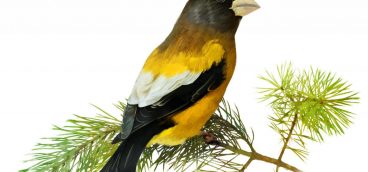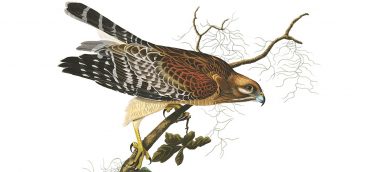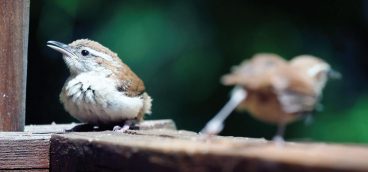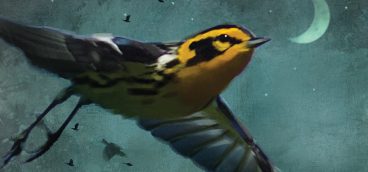
If any bird qualifies as the neighbor we’ve known our whole lives, it has to be the chickadee. Gregarious, sprightly, and fearless, chickadees can become so habituated to people and the offer of birdseed that they’ll literally eat out of your hand. They’re at our windows wherever a feeder goes up, finding the food within minutes. Their notes are background noise in almost every location. “Chick-a-dee-dee-dee” and “Hey, sweetie!” might as well be a chickadee’s streaming broadcast. They seem to be saying, “I’m here! Won’t you be my neighbor? And by the way, the feeder’s empty!”
As familiar as we are with these energetic little birds, they offer some surprises. First, there are actually two species of chickadee in western Pennsylvania. The black-capped chickadee is a year-round, non-migratory resident whose range goes coast to coast and starts in the middle of the country, north into the far reaches of Canada and well into Alaska. The second species is the Carolina chickadee. It ranges from the mid-Atlantic coast south to Florida and west to Texas and Oklahoma and is likewise non-migratory. In the Pittsburgh region, the two species overlap, and I struggle to tell them apart visually. The Carolina has a slightly shorter tail and the wing of the black-capped has a distinctive white mark, though their voices are quite different. Black-caps sing a clear song, while Carolinas are buzzier and pitchier. Their contact calls, when they seem to say their names, are different, too. The black-cap’s “chick-a-dee” is a cleaner version of the Carolina’s quick, forced, higher declaration. However, where their ranges overlap, the species can hybridize and sing a mix of notes. The distribution of the two species also is in natural flux: more Carolinas here, more black-caps there, depending on the year.
In winter, chickadees flock up with titmice, nuthatches, woodpeckers, and other feeder regulars. The holiday card review of these avian locals is an animated reminder that despite the cold, life persists and “hope is the thing with feathers,” as Emily Dickinson wrote. There is a pecking order among chickadees: The highest-ranking bird gets the home turf for springtime nesting. Others have to seek out a fresh place to raise young.
Tree cavities, found or excavated by woodpeckers or the chickadees themselves, provide a cozy spot to lay eggs atop a layer of moss, fibers, and hair. Chickadees also readily take to nest boxes, which should be emptied of the previous season’s nesting materials before spring. A brood consists of 3-13 white, dotted eggs, about half an inch long and the same in diameter. Females of both species warm these eggs with naked brood patches of featherless, blood-rich skin. After two weeks or less, out pop thinly downed chicks, eyes closed, who then spend the next 10-14 days sleeping, eating, and pooping, their tireless parents bringing masticated insects and seeds to spur the nestlings’ quick maturation.
Fill your feeders this winter, make a cup of hot chocolate, and enjoy these neighborly friends. Their antics and energy will make the short days fly by.
Email your avian encounters, photos, or questions to PQonthewing@gmail.com.










